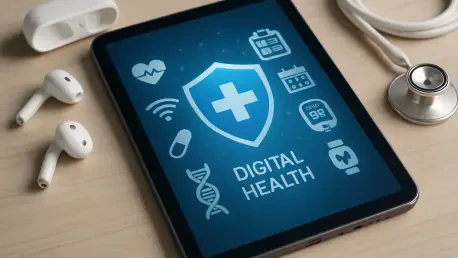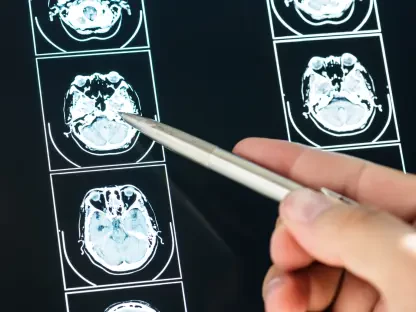Imagine a world where a doctor’s visit is just a video call away, or where a simple wearable device on your wrist can alert you to a potential health issue before it becomes serious, transforming the way we approach healthcare. This isn’t a distant dream but the reality of digital health—a groundbreaking fusion of technology and healthcare that’s redefining how medical services are delivered. No longer confined to treating illness after it strikes, digital health focuses on prevention, wellness, and personalized care through cutting-edge tools and data-driven insights. From remote consultations to real-time health tracking, these innovations are dismantling traditional barriers, making healthcare more accessible and efficient. This article delves into the heart of this transformation, spotlighting key components, real-world applications, undeniable benefits, persistent challenges, and the exciting trends shaping the future. With a special lens on Ireland’s role as a burgeoning hub for health tech, the journey through this evolving landscape promises to reveal how technology is already enhancing lives and what lies ahead on the horizon.
Core Pillars of a Healthcare Revolution
Digital health represents a broad spectrum of technologies aimed at enhancing every facet of medical care. At its foundation, telehealth stands out by enabling remote consultations through video platforms and secure data exchanges, ensuring that even individuals in isolated regions can connect with healthcare providers without the burden of travel. Meanwhile, Mobile Health, often referred to as mHealth, brings health management directly to users through smartphone apps and wearable devices that monitor vital signs like heart rate or blood glucose levels. These tools provide immediate feedback, allowing for tailored health decisions on the go. Another vital element, Health Informatics, leverages systems such as Electronic Health Records (EHRs) to streamline data management, ensuring that medical information is accurate, secure, and readily available to both patients and professionals. Together, these components form a cohesive network that not only supports reactive care but also prioritizes proactive health strategies.
Beyond their individual functions, these pillars of digital health create a synergy that transforms the patient experience. By integrating real-time data with accessible platforms, they empower individuals to take charge of their well-being while equipping healthcare providers with the insights needed for precise interventions. This interconnected approach reduces delays in diagnosis and treatment, fostering a system where prevention often takes precedence over cure. As technology continues to advance, the potential for these tools to bridge gaps in care delivery becomes even more pronounced, particularly for underserved communities. The seamless flow of information also minimizes errors, cuts redundancies, and builds trust between patients and medical teams. What emerges is a healthcare framework that’s not just responsive but anticipatory, adapting to needs before they escalate into crises. This shift marks a significant departure from traditional models, setting the stage for a more inclusive and efficient future in medicine.
Pioneering Progress in Ireland
Ireland has emerged as a dynamic leader in the digital health space, showcasing how technology can be practically applied to improve care delivery. The Health Service Executive (HSE) has taken significant strides with its Telehealth Roadmap, a strategic plan developed in collaboration with industry partners to standardize remote care services. This initiative prioritizes video consultations and online therapies, making healthcare far more accessible for those in rural or remote areas where physical access to clinics can be a challenge. Additionally, the presence of innovative companies like WHOOP in Dublin highlights the country’s growing influence, as they introduce wearable fitness bands that track essential health metrics without the distraction of screens. Such developments underscore Ireland’s commitment to blending cutting-edge tech with everyday health needs, ensuring that solutions are both practical and impactful for diverse populations.
Further elevating Ireland’s standing, advancements in artificial intelligence (AI) are reshaping diagnostics at institutions like the Mater Hospital’s Centre for AI and Digital Health in Dublin. Here, AI algorithms analyze medical data to detect critical conditions such as strokes with remarkable speed, significantly reducing patient wait times and improving outcomes. Mobile health applications also play a pivotal role, with tools like Dexcom’s continuous glucose monitoring system offering non-invasive ways for diabetes patients to manage their condition through real-time updates. Supported by a skilled workforce and progressive policies, Ireland fosters an environment where health tech thrives, attracting global innovators and researchers. This unique ecosystem not only drives local improvements but also positions the country as a model for how strategic partnerships and technology can address pressing healthcare challenges, paving the way for scalable solutions that could benefit regions worldwide.
Advantages Redefining Medical Access
The benefits of digital health are reshaping the landscape of medical services in profound ways, particularly by enhancing accessibility. In Ireland, initiatives like the HSE’s telehealth programs have made it possible for patients in rural areas to consult with specialists without enduring long, costly journeys. Mobile applications further this reach by enabling users to manage chronic conditions directly from their devices, ensuring continuous care regardless of location. Beyond geography, cost savings emerge as a significant advantage, as digital platforms reduce the need for in-person visits and eliminate redundant administrative tasks through streamlined digital records. This efficiency not only lowers expenses for patients but also allows healthcare systems to allocate resources more effectively, focusing on critical areas of need rather than logistical overheads.
Another transformative benefit lies in patient empowerment, a cornerstone of digital health’s impact. By providing access to personal health data and educational materials through apps and online portals, individuals gain the ability to make informed decisions about their care. This fosters a collaborative dynamic with healthcare providers, where patients are active participants rather than passive recipients. Additionally, real-time analytics from wearable devices enable early detection of potential issues, allowing for interventions before conditions worsen. Such proactive measures optimize hospital resources and enhance diagnostic precision, creating a healthcare model that anticipates problems rather than merely reacting to them. The ripple effects of these advantages are felt across entire communities, as improved access and engagement lead to healthier populations and more sustainable systems, demonstrating the far-reaching potential of technology in medicine.
Navigating the Roadblocks Ahead
Despite the remarkable promise of digital health, significant challenges persist that must be addressed to ensure equitable progress. Data privacy and security remain at the forefront of concerns, especially in light of incidents like the major cyber-attack on Ireland’s HSE in 2021, which exposed critical vulnerabilities in digital infrastructure. While regulations such as the General Data Protection Regulation (GDPR) offer robust frameworks for protecting sensitive information, the tension between sharing data for better care and safeguarding personal privacy continues to pose a complex dilemma. Striking this balance requires not only stringent policies but also ongoing investment in cybersecurity measures to protect against evolving threats, ensuring that trust in digital systems isn’t undermined by breaches or misuse of critical health information.
Equally pressing is the issue of the digital divide, which threatens to widen existing health disparities. Not all individuals have access to reliable internet or the digital literacy needed to navigate health tech tools, particularly among older adults or those in rural settings. This gap risks leaving vulnerable populations behind, counteracting the inclusive potential of digital health. In response, strategies like Ireland’s Digital for Care framework aim to build skills and design user-friendly, accessible services that cater to diverse needs. Regulatory challenges also loom large, as aligning innovation with compliance across different regions demands cohesive standards. Addressing these obstacles calls for a concerted effort from policymakers, tech developers, and community leaders to ensure that the benefits of digital advancements are distributed fairly, creating a system where technology serves as a bridge rather than a barrier to quality care.
Horizons of Health Tech Innovation
Looking to the future, digital health is poised to evolve through groundbreaking trends that promise to further revolutionize care. Digital therapeutics (DTx) and personalized medicine are gaining momentum as game-changing approaches. DTx uses software-based interventions to manage or prevent medical conditions, often complementing traditional treatments, while personalized medicine harnesses genetic and lifestyle data to craft tailored therapies. In Ireland, the integration of AI and machine learning continues to advance, with systems analyzing wearable data to predict health risks and enable timely interventions. Supported by strategic focuses like the HSE’s emphasis on remote patient monitoring, these technologies are shifting healthcare from episodic responses to continuous, proactive models that prioritize individual needs over one-size-fits-all solutions.
Another emerging focus is the role of technology in promoting health equity and enhancing chronic disease management. Future innovations are increasingly designed with inclusivity in mind, aiming to reach underserved populations through accessible interfaces and affordable tools. Remote monitoring systems, for instance, allow for ongoing care of chronic conditions without frequent hospital visits, reducing strain on both patients and facilities. As AI continues to refine predictive analytics, the potential to anticipate and mitigate health crises grows, offering a glimpse into a system where prevention is the norm. These advancements signal a transformative era where digital health not only improves outcomes but also ensures that high-quality care is a universal right, breaking down demographic and geographic barriers. The path forward hinges on sustained collaboration to refine these tools and integrate them seamlessly into global healthcare frameworks.
Reflecting on a Tech-Driven Legacy
Looking back, the strides made in digital health paint a picture of remarkable transformation, as technology has redefined the boundaries of medical care. From telehealth initiatives that connected remote patients to specialists, to wearable devices that provided real-time health insights, the past years have demonstrated how innovation can bridge critical gaps in access and efficiency. Ireland stands out as a beacon of progress, with strategic efforts like the HSE’s frameworks and AI-driven diagnostics at institutions like the Mater Hospital setting benchmarks for others to follow. Challenges such as data security and the digital divide have been met with thoughtful responses, shaping a narrative of resilience and adaptability. As the journey unfolds, the emphasis on patient empowerment and predictive care leaves an indelible mark, proving that technology can humanize healthcare. Moving forward, the focus must shift to scaling these successes, ensuring that inclusive design and robust protections remain at the core of future developments to sustain this momentum for generations to come.









